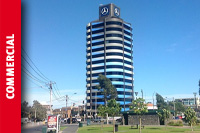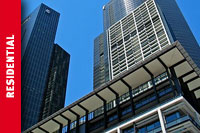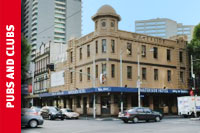Fire Protection
The Dangers of False Alarms
The Australian Football League of 2015 became marginally more eventful when an automated fire protection message instructed people to vacate the Melbourne Cricket Ground. The fire alarm, which went off during the Geelong vs. Richmond match, was part of the stadium’s emergency warning system. Surprisingly the players, umpires, commentators, and large number of spectators ignored the alarm to focus on the game.
Fortunately for them, the Melbourne Cricket Council later reported the fire safety warning to be a false alarm triggered by a damaged sprinkler.
Most people have been mislead by a false fire alarm. The inconvenience of leaving work undone, trekking down long staircases, and evacuating the building—only to find that the fire protection system was activated by an electrical fault or an illicit cigarette—quite naturally fosters apathy. Repeated false alarms at Seton Hall University, for example, led to its students developing an attitude of absolute indifference when the shrill warning call of their fire safety system was activated. Tragically, when a real fire broke out, many students chose to ignore the alarm. This reluctance to act resulted in three fatalities, and fifty eight students injured.
Consequences of faulty fire protection
Faulty fire equipment is dangerous and not just because it can fail you in the event of a real fire. The false alarms that malfunctioning fire protection equipment give rise to have disastrous consequences. The annoyance caused by false alarms is a step away from apathy, as numerous fire fighters across the world have pointed out. And apathy is a step away from disaster and death, as the students and teachers of Seton Hall University discovered for themselves.
Causes of false alarms
Faulty fire protection equipment is the result of a large number of factors interacting with each other. Smoke alarms, for example, can be triggered by accumulated dust, dead insects in sensory chambers, loose electrical connections, humidity, and unwise positioning. Corrosion, air bubbles, and mineral deposits are the main causes of malfunctioning sprinklers—which themselves are amongst the commonest culprits behind malfunctioning fire safety systems.
Regular maintenance checks can identify such issues, and solve all potential problems before they become a threat.
Official statistics - prevalence of false alarms
“This won’t happen to me” is an attitude commonly adopted by people. But according to the Metropolitan Fire Brigade, there were 14,659 incidents of false alarms and false call outs in Melbourne in 2013 – 2014. It’s safe to assume that most of the building managers and owners in those 14000+ cases believed that the consequences of unchecked fire protection systems wouldn’t impact them, either.
The price you pay
Negligence and improperly maintained fire protection systems can have serious legal and moral consequences. False call outs deprive actual fire victims of the assistance they need. They incur steep penalties and negatively impact the productivity of businesses. They increase the risk of accidents and incidental injury as firefighters navigate traffic. And they encourage attitudes of complacency and indifference.
As a building owner and manager, it is your duty to ensure that these scenarios never unfold with the implementation of an effective fire protection maintenance plan.
Fire protection services
Multiphase offers comprehensive fire protection services. Our inspections evaluate and analyse fire equipment and fire protection systems at regular intervals. The fire safety system we implement keeps track of all our clients’ equipment including the monitoring of expiry dates. Fire safety is a serious issue and we take it seriously. Contact us now to know more about how our fire protection services can help you.

Multiphase’s fire protection maintenance services reduce the likelihood of false alarms








